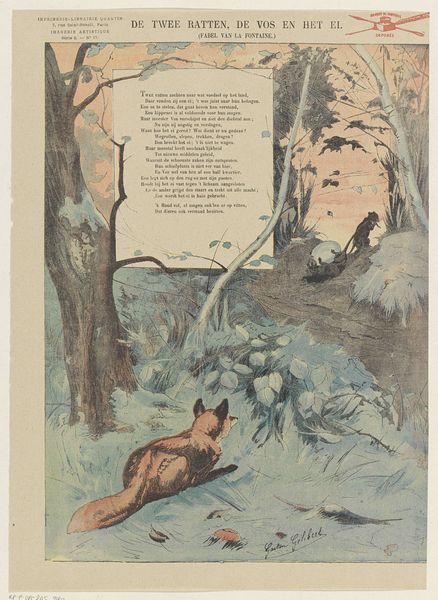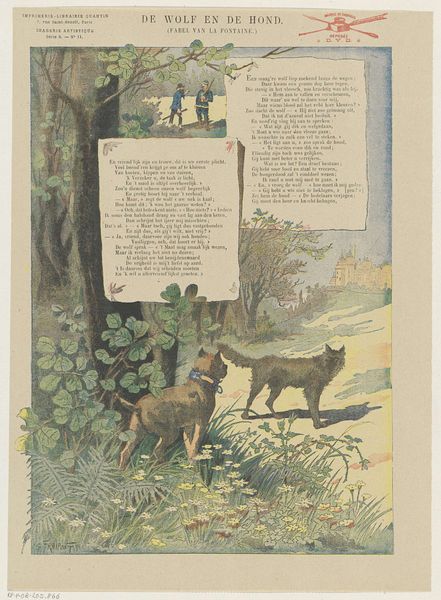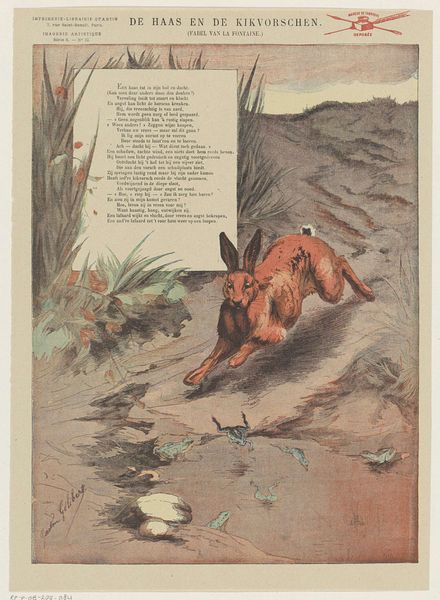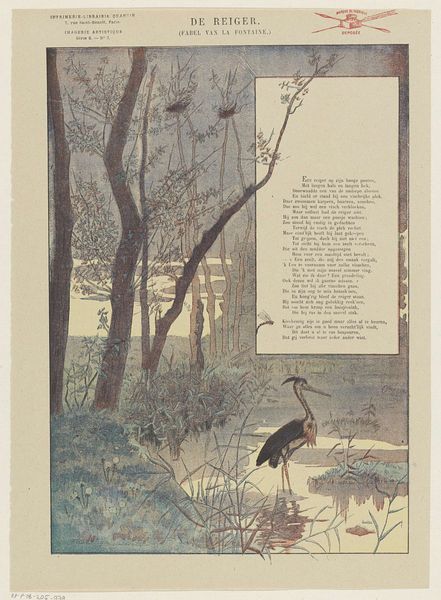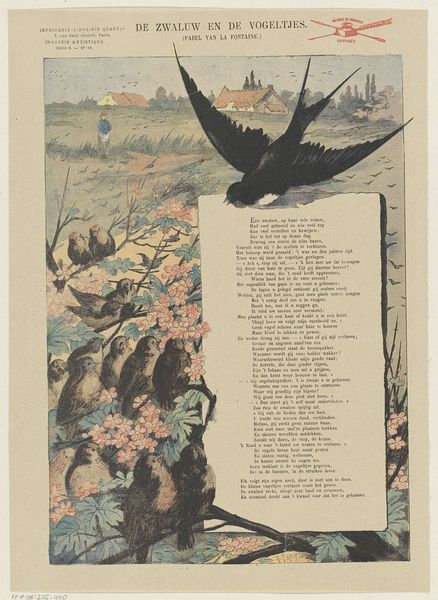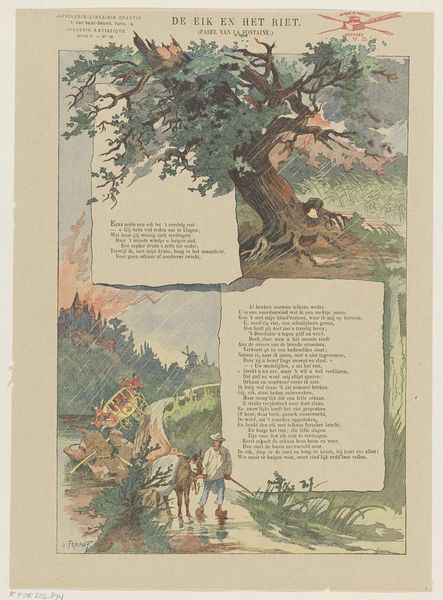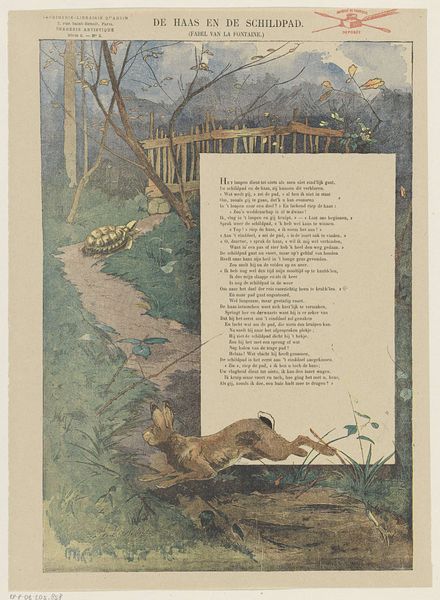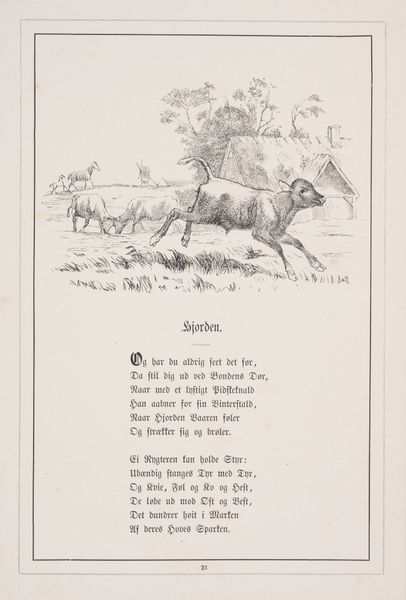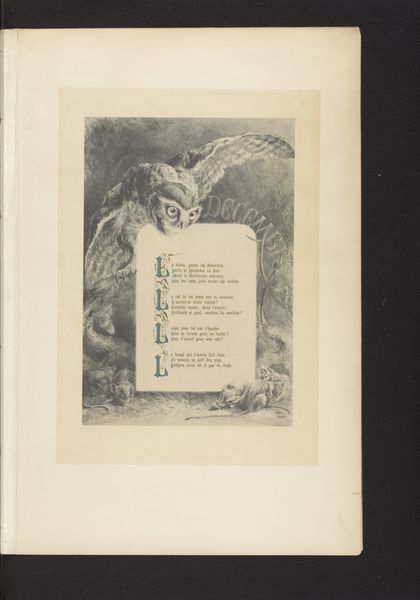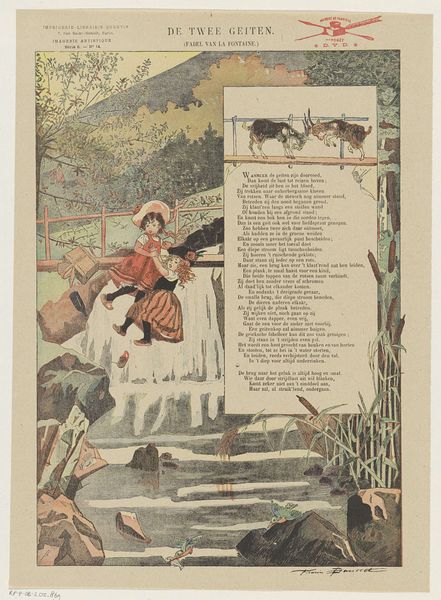
print, watercolor
#
water colours
#
narrative-art
# print
#
watercolor
#
folk-art
#
watercolour illustration
#
genre-painting
#
watercolor
Dimensions: height 368 mm, width 268 mm
Copyright: Rijks Museum: Open Domain
Curator: The artwork before us is titled "De raaf en de vos," or "The Raven and the Fox," a watercolor print crafted by Gaston Gélibert between 1876 and 1890. Editor: It's evocative, isn't it? There's a definite sense of staged drama, almost like a proscenium arch framing the interaction. The color palette is muted, dominated by earth tones and subtle blues, which adds to the antique, fable-like feeling. Curator: Precisely. The print is part of a broader artistic trend of the late 19th century which saw artists illustrating classic fables for mass consumption, often moralizing tales packaged as entertainment for both children and adults. This narrative approach was popular as societal values were rapidly changing, providing a sense of continuity. Editor: I find the spatial arrangement intriguing. The fox at the base gazes up at the raven perched in the tree. It's the deliberate visual direction created by the posture, especially the diagonal line established from the fox's gaze all the way to the raven. This helps to convey that sense of storytelling—of plotting, almost. Curator: Certainly. Gélibert capitalizes on established iconography; the fox, often depicted as cunning, contrasted against the raven, perched high, symbolizing perceived wisdom, a subtle commentary on social hierarchies of the time and how appearances often masked intentions. Editor: Note, also, the rendering of the environment. The watercolor technique allows for a certain ethereal quality in the trees and foliage, yet there's also detail present in the animals' fur and feathers, which adds a layer of texture to the deception, or in simple terms, allows us to study and absorb detail but be deceived by the softness. Curator: A softening of hard realities, if you will, reflecting the function of these illustrative prints in educating the populace through softened social critique. Editor: So, looking at this from the perspective of composition, color, and material properties, I have the impression of this piece of a story frozen for further reflection. Curator: And considering the artist’s use and reuse of familiar narratives within a rapidly changing society, one can better see how fables offered both solace and instruction.
Comments
No comments
Be the first to comment and join the conversation on the ultimate creative platform.
